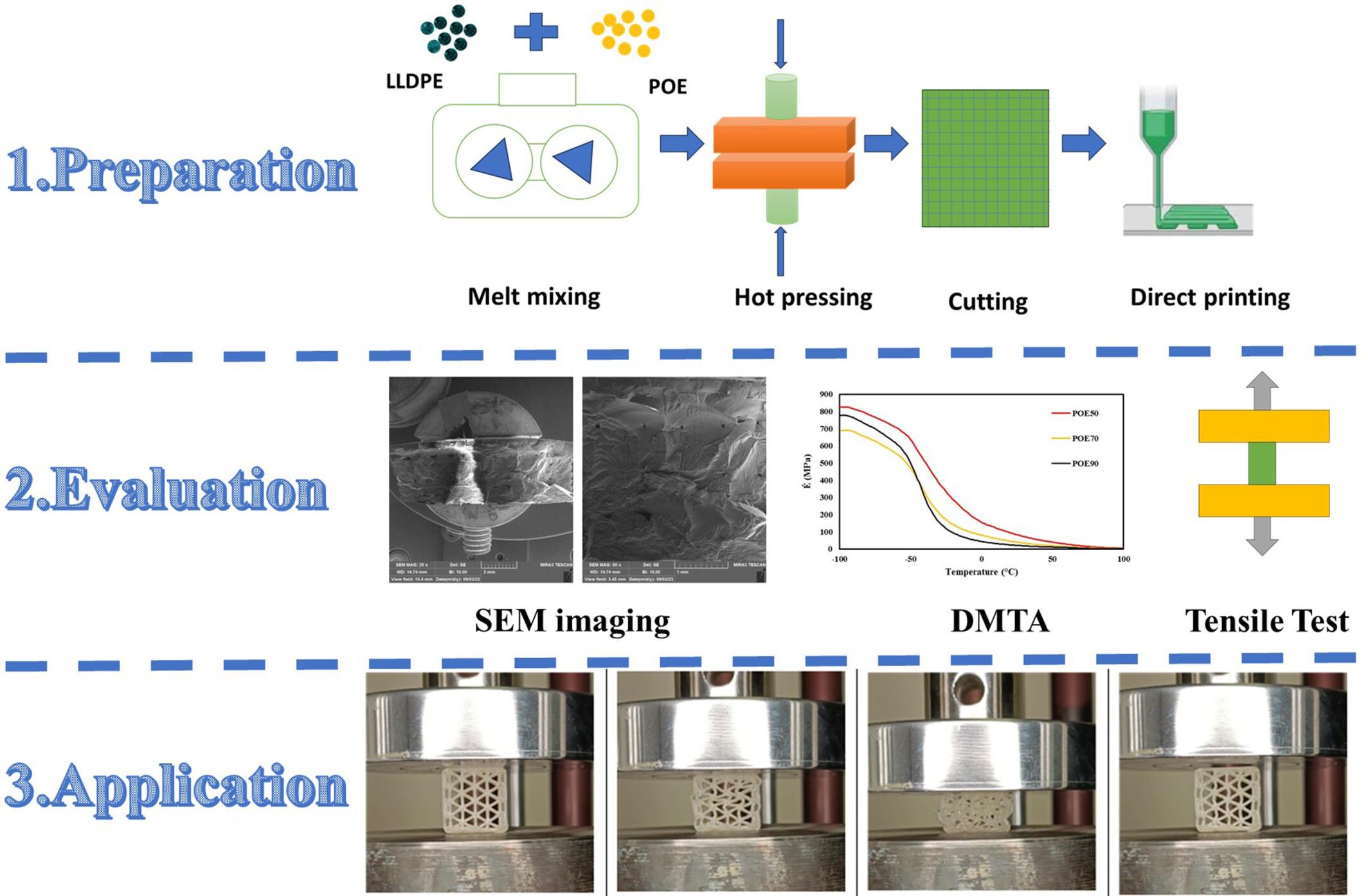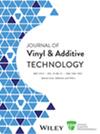Influence of LLDPE on the mechanical properties improvement of 3D printed POE/LLDPE blends
Abstract
Polyolefins and polyolefin elastomers (POEs) are widely used in various applications due to their unique properties. However, their use in 3D printing has been limited due to challenges such as excessive softness, shrinkage, warpage, and poor mechanical properties. In this study, two strategies were employed to enhance the performance of POEs in 3D printing. First, POE was blended with 10%, 30%, and 50% percentages of linear low-density polyethylene (LLDPE) to improve the material's mechanical properties and printability. Second, a specialized printer called a pneumatic feeding fused granule fabrication (FGF) printer was used. This printer allows for the direct printing of material granules, eliminating the need for filaments and resolving filament-related problems. To evaluate the quality of the printed parts, tensile tests, dynamic mechanical thermal analysis (DMTA), and scanning electron microscopy (SEM) imaging were conducted. The printed parts showed desirable tensile properties (with approximately 3000% elongation at break and approximately 12 MPa tensile strength). Compression tests were also conducted on cubic structures with varied composition ratios and printing patterns such as grid, triangle, and honeycomb. The main purpose of this research was to explore the energy absorption capabilities of the printed blends. The results of our study showed that blending POE with LLDPE improved printability, tensile strength, energy absorption, and compressive properties. The blend with 50% LLDPE and honeycomb structure exhibited the best compressive and energy absorption properties.
Highlights
- Blending of POE and LLDPE using melt mixing with three different blending ratios.
- Successful 3D printing with the fused granule fabrication technique.
- Investigating mechanical properties, microstructure, and thermal analysis.
- 125% increase in ultimate tensile strength by increasing LLDPE.
- Achieving the highest energy absorption for the 3D printed honeycomb structure.



 求助内容:
求助内容: 应助结果提醒方式:
应助结果提醒方式:


